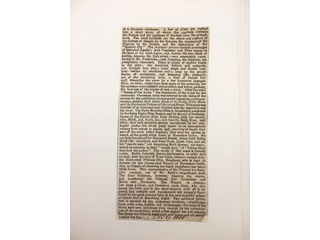Transcription
of a dramatic character. A few of them are worked into a short story, of which the quarrels between the Zealots and the partisans of Gischala form the ground work. The chief incidents are the attack and capture of the fortress of Gamala by the Romans, the massacre of the Pilgrims by the Zealots, and the destruction of the “doomed city.” The dramatis personae include personages of historical dignity; both Vespasian and Titus appear at the head of the tenth legion, and, besides the two chiefs of parties, Ananias, the high-priest.—very respectably represented by Mr. Fredericks,--and Josephus, the historian, are conspicuous characters. There is plenty of warlike bustle in the piece; the scorpions, balistar, and catapults, are brought into play; some single and double combats, besides an occasional Melée, keep up the proper degree of excitement, and Barnabas (Mr. Attwood), one of the wandering tribe, a kind of Jewish Falstaff, diversifies the scene by a few humours passages. More , we think, might have been made of the materials, but the audience were satisfied and gratified, and this is, perhaps, the best test of the merits of such a piece. After the usual “Scenes of the Arena” the impatience of the house for the customary Christmas treat was relieved by the rising of the curtain for the exhibition of a new grand equestrian comic pantomime, entitled Bold Robin Hood, or the Pretty White Horse and the Enchanted Princess of Sherwood Forest. This piece was likewise of an historical cast, blended with the legendary and the ideal. The Fairy Morning (Miss A. Lonsdale) is awakened by the Fairy Night (Miss Mason), and by the aid of Sunbeam, Queen of the Fairies (Miss Rosa Henry), with her attendants, Mirth, Joy, Sport, &c., and Gnatfly, Buzz, Hum, and Sting—four very sprightly sprites, represented by the celebrated Arabs—the whole party travel by an atmosphereic railway from planet to planet, and, reaching at length that part of the earth called England, they send the sprites in search of the pretty white horse at Horseshoe Castle. We are here introduced to Sherwood Forest, where bold Robin Hood (Mr. Crowther), and Friar Tuck, Little John, and all his “Merrie men,” not forgetting Maid Marian, are represented as carrying on their “simple plan” of “taking when they had power.” The whole of this scene is broadly comic. Robin, however, deserts his foresters, in order that he may, with the help of Friar Tuck, release a certain lady, the Enchanted Princess (Mrs. Beacham), who is kept in durance by the brazen-eyed Wizard of Horseshoe Castle, who, in despair of obtaining her hand, transforms her into a white horse. This representative of the Princess is a beautiful creature, one of Mr. Batty’s magnificent stud. The fairy Sunbeam, however, dissolves the charm, and transforms the Princess into Columbine and Robin into Harlequin. The Wizard, in revenge, lets loose a Clown and Pantaloon upon them, who persecute the lively pair in the usual manner, until all is adjusted, and rewards and punishments are properly distributed by the good-natured fairy in her very splendid palace, or Grand Hall of Revolving Light. The period of probation is marked by the customary incidents,--transformations, cuffs, rows, and many were marred by the refractoriness of the machinery, which a few nights’ use will remedy. The house was filled in every part, and young and old seemed to enjoy the fun.
